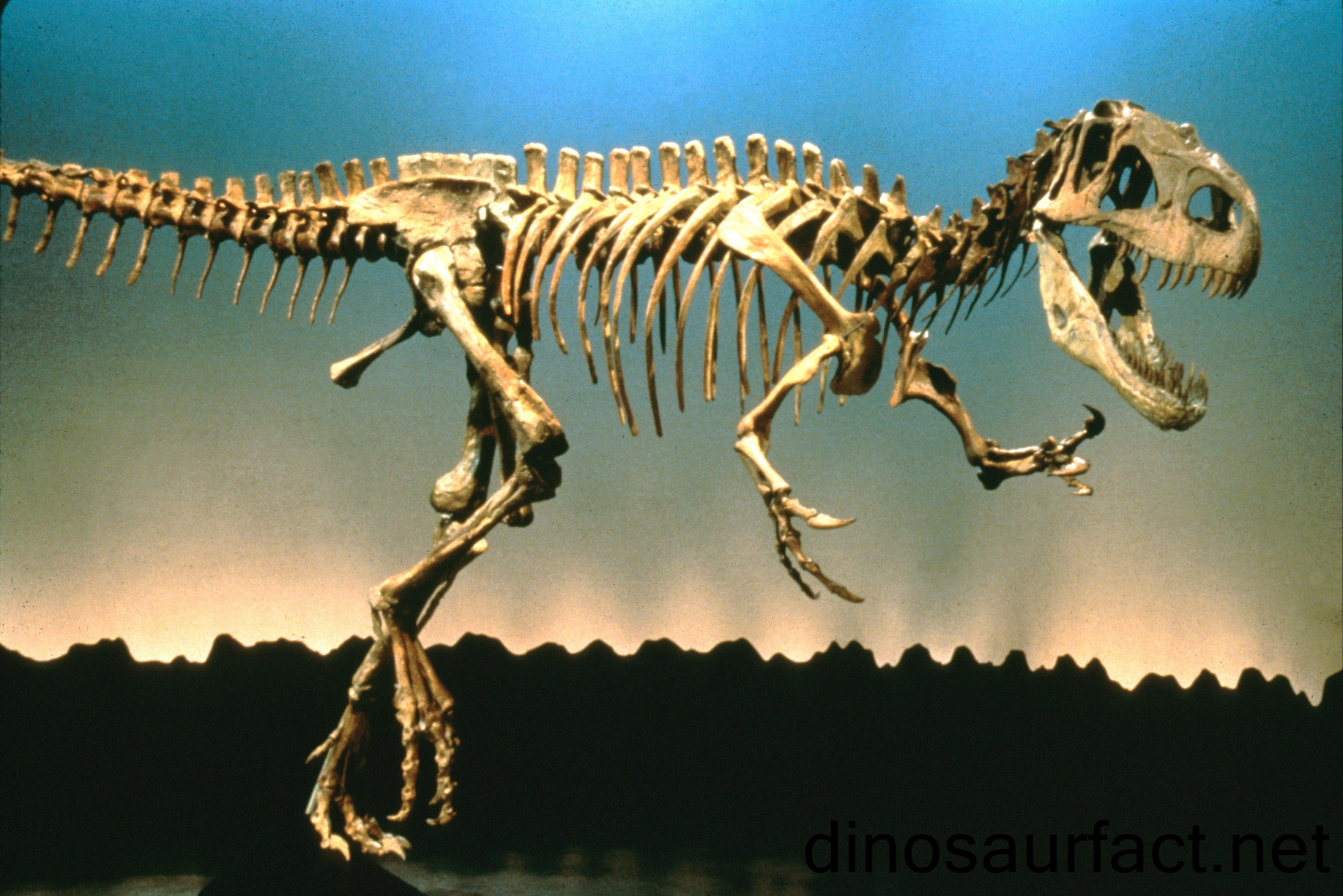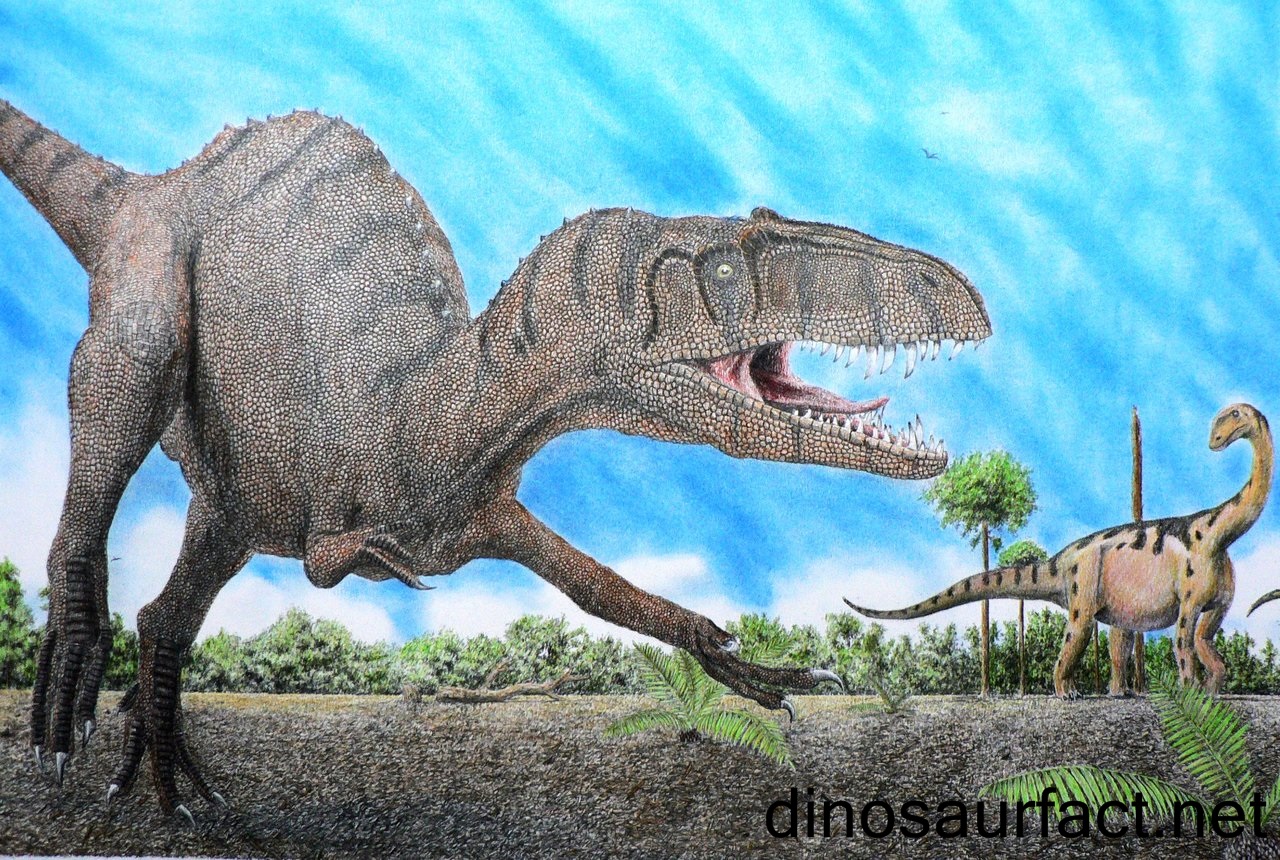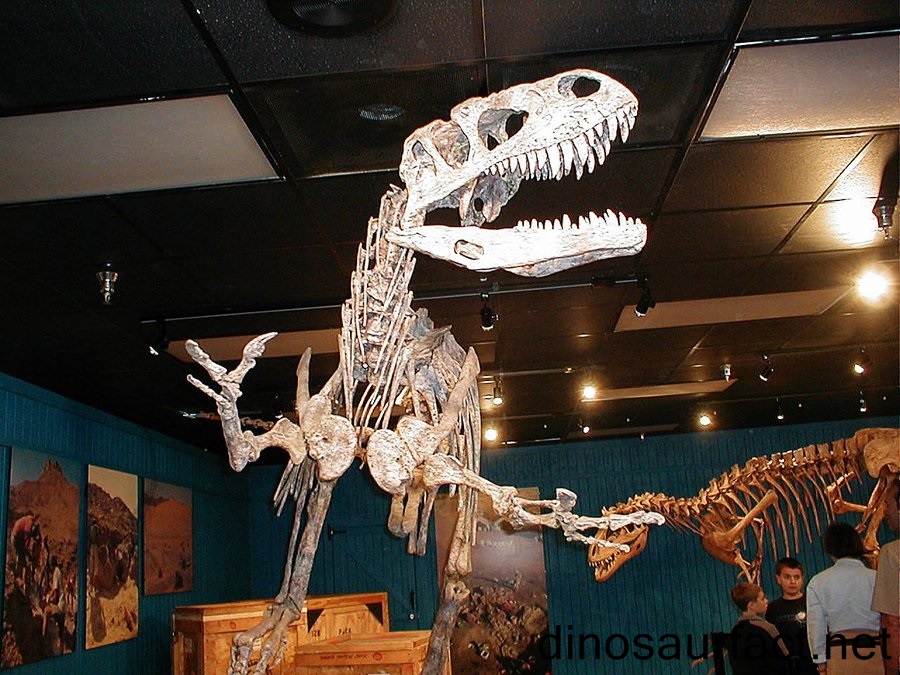 Click to visit the previous dinosaur bio
Click to visit the previous dinosaur bio
 |
|
 |
|
Kingdom: Animalia
Phylum: Chordata
SuperOrder: Dinosauria
Order: Theropoda
Family: Megalosauridae
Genus: Afrovenator
 |
|
 |
|
 |
|

Introduction
The Afrovenator was a dinosaur that was present on the earth in the Jurassic Period of the Mesozoic Era. The timeline of its existence was between 164 and 159 million years ago. This lies in the Callovian to the Oxfordian ages of Jurassic. The fossils of this creature were discovered in Africa. This particular region had heretofore yielded remains that were dated to the Cretaceous Period. Hence the Afrovenator was thought to belong to that time period. But further research showed that its bones were much older than previously believed, thus placing it in the Jurassic Period.
The Afrovenator was a theropod dinosaur; it was able to balance itself on hind legs while walking and it was carnivorous. Its length was about 7 to 8 meters. The exact weight of the dinosaur is unknown, but it is approximated to about 1 to 2 tons.
Etymology
The name Afrovenator is a combination of two words. 'Afro' is a prefix that is derived from the Latin word 'afer' which means 'from Africa'. The 'venator' also has Latin roots and translates to 'hunter' or 'predator'. Thus the juxtaposition of the two words denotes 'the hunter from Africa'.
The specific name A. abakensis is derived from the word Abaka, which is the name of the region where the fossils of the dinosaurs were found, in the native Tuareg language. The suffix 'ensis' denotes 'hailing from'.
The christening of the remains was performed by a group of scientists led by Paul Sereno, which included Jeffrey Wilson and Hans Larsson among others, in 1994.
Discovery of fossils
The remains of the Afrovenator were excavated in the Tiourarén Formation in the Agadez region of Niger in Africa. They were found in the year 1993. The remains fossils were discovered by paleontologist Paul Sereno. A few years later, the sauropod dinosaur Jobaria was found in the same formation by Sereno. They are believed to have coexisted.
Nature of fossils
- Many bones of the cranium and post cranial skeleton were discovered in the year 1993, which are attributed to the Afrovenator. Most of the skull, except the temporals and mandibles were included in the holotype. The appendicular skeleton included partial bones of the fore and hind legs and the axial skeleton included a few vertebral segments and certain portions of the pelvic girdle.
- The humerus (40cm), tibia (68cm) and the femur (78cm) were relatively long. The fact that the forelimbs were shorter than the hind legs indicated that the dinosaur was bipedal.
- The nasal, lacrimal, parietal and mandibular bones were elongated, making the shape of the skull longer than it was wide. This feature is seen most theropods.
Current location of fossils
The fossils of the Afrovenator are currently housed in the Museum of Chicago.
Classification
- The Afrovenator is classified under sub order Theropoda, family Megalosauridae and sub family Afrovenatorinae.
- The taxon Megalosauridae was used to group many undefined dinosaurs or those of dubious classification. However, today it contains those dinosaurs that are more closely related to the Megalosaurus than the Spinosaurus or Allosaurus.
- When the remains were first discovered, Sereno believed it to be more closely related to the Spinosaurus.
- In 2002, it was considered a primitive megalosaurid and grouped with the Eustreptospondylus.
- In 2003, Rahaut published a study stating that the Afrovenator was closely related to the Allosaurus.
- However, in 2012, it was given its own sub family, Afrovenatorinae, in which were grouped the Dubreuillosaurus, Magnosaurus and Leshansaurus.
Paul Sereno
Paul Callistus Sereno is a contemporary vertebrate paleontologist from the United States of America. His body of work has included the discovery and classification of many South American and African dinosaurs.
Sereno received his graduate and doctoral degrees from the Columbia University and is currently associated with the University of Chicago. He has co-founded 'Project Exploration' a nonprofit study group for children to get them interested in paleontology and science. He had also uncovered a large Stone Age burial ground in the Nigerian region of the Sahara desert. The National Geographic Channel had filmed a documentary called 'Skeletons of the Sahara' which was about this find.
Some of the notable fossils described and/or discovered by Sereno include the Sarcosuchus, Eoraptor, Eodromaeus, Afrovenator, etc.
Physical features
- The Afrovenator was a large theropod and had a length of about twenty five to thirty feet from snout to tail.
- The mass of this reptile is a little difficult to determine as its fossils are not clear about its musculature. Moreover, the species which are grouped with it are not properly defined either. But most scientists agree that it could have weighed around 1000 to 1800 kilos.
- Its head was large and long. It had powerful jaws that bore fourteen teeth on the mandible.
- The limbs of the Afrovenator were lean and slender. Its forelegs had three digits which had sharp claws at the end of them. These claws were most likely used for ripping its prey, as were not so well developed as to allow the dinosaur to grasp things with them. But the forelegs did give it a better reach than most theropods.
- Its femur was longer than its tibia. This indicated that the dinosaur could not sprint at very high speeds, but could still run moderately fast.
- As the forelimbs were much shorter than the hind legs, the Afrovenator was bipedal in nature.
- The tail of the Afrovenator was stout and thick. It was most likely not very dexterous taking into consideration the tight fusion of the coccygeal vertebrae.
Habits and Habitat
The Afrovenator was a meat eater. It most likely predated on smaller lizards and other dinosaurs. No other information is available about the nesting or reproductive habits of the dinosaur.
The Africa had separated from Pangaea by the Late Jurassic Period and it was abundant in water bodies and large grasslands, which comprised of the habitat of this dinosaur.
Related and coexisting species
The Afrovenator is related to the Spinosaurus and closely related to the Dubreuillasaurus, Duriavenator and the Eustreptospondylus. It is believed that this dinosaur coexisted with and hunted the juveniles of the Jobaria, which was a large sauropod. However, there is no evidence backing this hypothesis.
The concluding notes
The Afrovenator was one of the dreaded predators of the Late Jurassic. It was challenged by very few carnivores, most of which were other theropods. Species such as the Afrovenator eventually gave rise to the larger and stronger Cretaceous dinosaurs, such as the Tyrannosaurus.
Index
Extinct Profiles
 Triassic Dinosaurs
Triassic Dinosaurs Jurassic Dinosaurs
Jurassic Dinosaurs Cretaceous Dinosaurs
Cretaceous Dinosaurs Pterosaurs
Pterosaurs Marine Reptiles
Marine Reptiles Dinosaur Extinction
Dinosaur Extinction